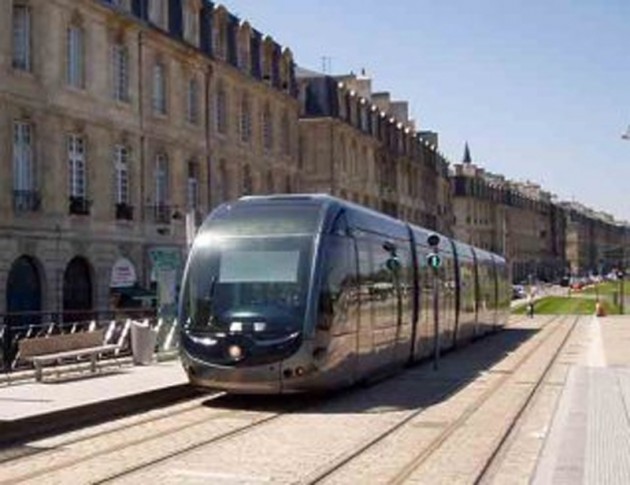Support grows for USF area light rail

For more than a decade, lack of support has prevented construction of a light rail system in Tampa. However, the Tampa Rail Project (TRP) may have found an opportunity to receive funds and has gained additional attention from USF students.
Tampa Mayor Pam Iorio met with the Hillsborough County Transportation Task Force on April 1 to discuss a one-cent sales tax referendum to fund the TRP. For the first time, the county commission voted to begin writing a ballot for November 2010 that would include a referendum about the TRP.
“It was a very exciting meeting that ultimately led to Hillsborough County coming closer than ever to putting a mass transit referendum on the ballot,” said Elaine McCloud, transit manager for the city of Tampa.
The first leg of the TRP would stretch 13.3 miles and is expected to cost up to $70 million per mile, McCloud said. It would connect the USF area and downtown Tampa and, later, include Tampa International Airport.
USF President Judy Genshaft said recent plans project part of the rail to be on Fowler Avenue with stops at the Botanical Gardens, USF Health and the James A. Haley Veterans’ Hospital. Feeder buses including the Bull Runner will transport students and faculty to and from those sites.
“I’m so convinced it is such a plus for this region to have rail,” Genshaft said. “When I was in San Diego visiting the University of California, the light rail went right to the student union. It was so great because then it’s a central place for students to move in terms of transportation, and it cuts down on the need for cars around the campus.”
McCloud said there would be a fee to ride the rail similar to the area’s bus fares. Hillsborough Area Regional Transit charges a $1.75 one-way cash fare for the local street bus and a $2.75 one-way fare for the Express buses.
“The (TRP) fee will not be enough to cover operation costs,” McCloud said. “It will only cover somewhere in the neighborhood of 20 percent of the operating costs.”
The Federal Transit Administration will supply funds, but the city must generate local funding in order to receive federal funding. In 2002, the TRP failed to receive federal funding because the city lacked a local funding source.
The one-cent sales tax will help fund additional legs of the rail project and other mass transit plans, including doubling the bus systems, as well as non-transit plans.
Hillsborough County Metropolitan Planning Organization’s Executive Director Ray Chiaramonte said 75 percent of the tax revenue has to be used for transit-related projects, but 25 percent can be put to other use. He also said the proposed one-cent sales tax could increase or decrease.
“We would figure out what systems we could accomplish with the penny or what we could accomplish with half a penny,” Chiaramonte said.
McCloud said she spoke to professor Elizabeth Strom’s Geology Regional Planning class April 1 about the benefits of mass transit for Tampa.
“I talked to them about how they experience parking problems first-hand and the traffic congestion right there on campus and Fowler Avenue,” McCloud said. “We talked about some of the challenges in terms of Howard Franklin Bridge and the number of people who cross that bridge every day.”
Strom’s students presented group research projects related to mass transit planning Thursday.
“My goal wasn’t to make them advocates of (the rail project) — although many of them probably are — but rather have them look at all sides of the issue and how they come out feeling about it,” Strom said.
Junior Aiden Reidy and senior Lyndsey Scofield, environmental science and policy majors, presented a project on how Tampa can learn from both national and local groups that generate support for their cities’ mass transit projects.
“I think it is an excellent idea. I think it has a lot of potential to do plenty of things,” Reidy said. “For USF in particular, it could unite not only Tampa campus with other (USF) campuses but with other colleges and universities in the area as well.”
Reidy said he believes the recent support for the TRP is because of increased knowledge of environmental and population issues.
“I think this particular area has just been stagnant due to people stuck in their old ways,” he said.
Scofield said she is used to public transportation — especially light rail — from growing up in the Northeast, and would like to see a rail system in the Tampa area.
“I think it’s a great option, because it transports a lot of people at once,” she said. “It reduces the load of cars coming. At USF, that’s clearly an issue — with so many people circling the parking lots for parking and the continuous building of parking garages and how long it takes just to get out of this area with Bruce B. Downs and Fletcher being so congested.”
McCloud said USF is a key component of the mass transit and light rail network.
“(The students and I) agree that we’re at a critical juncture in our mass transit and regional efforts,” McCloud said. “We ended (the class) by saying it’s going to take all of us to make mass transit that includes light rail a reality. It really comes down to one question — if not rail now, when? We have been trying to get light rail for the last
20 years, and we can’t wait another 20 years.”






